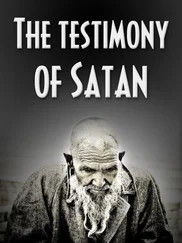On May 1, after three months of strikes that seemed to be killing more innocent people than intended targets, JSOC hit its mark. At 3:00 a.m., five Tomahawk cruise missiles rained down on the town of Dhusa Mareb in central Somalia, blowing up a house that CENTCOM alleged was used by “a known al-Qaeda operative and militia leader.” The mission, military officials said, was the result of weeks of surveillance and tracking. Witnesses in the area described seeing the dead bodies of sixteen people. One of them was that of al Shabab’s military commander, Aden Hashi Ayro. Although the US intelligence had been wrong several times about killing al Shabab leaders, this time there was little room for doubt. After the strike, al Shabab released a statement confirming Ayro’s death, praising him as a hero. Attached to the release was the first publicly available photo of Ayro and a bio of their slain leader. Just before Ayro’s death, according to a US diplomatic cable, the al Shabab leader had met with Indha Adde, a member of his Ayr clan, perhaps to broker a deal. US officials hoped his killing would isolate al Shabab from its former ICU allies and would lead to a “short-term disruption of terrorist operations.” The strike may have deterred Indha Adde from deepening his alliance with al Shabab, but the assassination also emboldened al Shabab and made a martyr of Ayro.
THE ETHIOPIAN OCCUPATION began to wind down, following an agreement signed in Djibouti in August 2008 between Sheikh Sharif’s faction and officials from the TFG. In reality, the al Shabab insurgency had bled the Ethiopians out, but the diplomatic charade served as a face-saving cover. The “Djibouti Agreement” paved the way for Sheikh Sharif to assume the presidency in Mogadishu. To veteran observers of Somali politics, Sharif’s reemergence was an incredible story. The United States and Ethiopia overthrew his government, only to later back him as the country’s president. When I met Sheikh Sharif at the presidential offices in Mogadishu, he refused to discuss this period of his career, saying only that it was not the right time. Ironically, Sheikh Sharif, who once declared himself a warrior against foreign occupation, would rely entirely on the US-backed African Union force that replaced the Ethiopians to keep his nominal grip on power.
When some members of the ICU and the Somali government merged following the Djibouti Agreement, Aweys and al Shabab predictably rejected it, believing that the ICU “had submitted themselves to the infidels,” according to Aynte. Fazul and Nabhan were “fundamental in convincing the Shabab not to join the Djibouti Agreement. Because, if the Shabab had joined the Djibouti Agreement that brought about the current government under the leadership of Sheikh Sharif, Fazul and other al Qaeda players would not have been [able to remain] in Somalia. So I think it was a personal interest of al Qaeda figures, to make sure that that doesn’t happen.” Al Shabab’s Somali leader, Ahmed Abdi Godane, declared Sharif an apostate and a “favorite puppet” for the “infidels.” As the new government formed, al Shabab prepared to widen its insurrection, vowing to take down the new coalition government and to expel the US-backed African Union Mission in Somalia (AMISOM) forces that had replaced the Ethiopians.
With much of the ICU leadership dead, exiled or bickering over who would control what cabinet positions within the newly installed US-backed government, al Shabab capitalized on the disarray. The group welcomed the disillusioned fighters who felt that they had been sold out by the leadership of the Courts. Aside from its commitment to carry on the jihad, what separated al Shabab from the Somali government was its indigenous diversity. Its leadership consisted of figures from Somalia’s four major clans, but it also put members of minority clans in influential positions. Also, true to its name, al Shabab began recruiting young Somalis whom it could easily indoctrinate. It gave them a sense of empowerment in a landscape once again dominated by brutal warlords and clan politics.
In 2008, al Shabab evolved into a broad-based movement and significant social force. While keeping up its military offensive, it began establishing itself in the south, by projecting soft power and cultivating popular support. Al Shabab members would make diplomatic “visits,” as they called them, to towns, bringing with them food, money, and “mobile Sharia courts” to settle local disputes. Reminiscent of the ICU’s approach, the Islamist militants would spend time moderating speedy court proceedings in each town, settling local disputes and sentencing criminals. Many of these takeovers of Somali towns were bloodless, involving lengthy negotiations with clan elders to convince them of al Shabab’s noble intentions.
Al Shabab followed up on this diplomacy with popular social programs. One very important move was the further dismantling of roadblocks and checkpoints, a process the ICU had begun during its time in power. These checkpoints were historically used by warlords as tools of extortion rather than security. “The perception that [al Shabab] and other Islamist insurgent groups are a rag-tag army of crude fanatics whose first instinct is to use force and terror to impose their radical vision is a caricature,” noted a report by the International Crisis Group. “Their tactics have been well-adapted and more effective than those of their adversaries. They have largely succeeded in casting themselves as true Somali patriots opposed to the Ethiopian-allied TFG. As a result, they have been gaining popularity in central and southern Somalia, just as they did before the Ethiopian invasion in December 2006.”
At the same time that it engaged in its version of a hearts-and-minds campaign, however, al Shabab also implemented policies reminiscent of the Taliban: banning popular Bollywood films, forcibly shaving the heads of men with “inappropriate” hairstyles and imposing harsh sentences for infractions against the al Shabab interpretation of Sharia law. By early 2009, al Shabab would control of most of southern Somalia. “In many areas al-Shabab is the only organization that can provide basic social services, such as rudimentary medical facilities, food distribution centers, and a basic justice system rooted in Islamic law,” concluded a report for the Senate Foreign Relations Committee. “Western diplomats fear that al-Shabab will continue to win converts by providing services similar to the way Hamas found success in the Gaza Strip. Experts strongly caution that there is little the United States can do to weaken al-Shabab.” Further bombing by the United States or increased foreign military intervention, the report warned, could make al Shabab stronger.
While al Shabab consolidated local support, on the global scene, al Qaeda could now use the jihad in Somalia to recruit. In this narrative, a Christian nation, Ethiopia, backed by the United States—the root of all evil—had invaded Somalia and slaughtered Muslims. Jihadists had risen up and repelled the invasion, making Somalia a front-line battleground against the crusade bin Laden had long alleged the United States was waging. When the Ethiopians withdrew, according to Aynte, al Shabab “emerged far more popular and powerful than ever,” transforming “its domestic, irredentist struggle into a global Jihadist dictum.” Foreign fighters began pouring into Somalia in far greater numbers. Bin Laden released an audio address titled “Fight on, Champions of Somalia,” amplifying calls for the overthrow of Sharif’s “apostate” government. Al Shabab began easily taking territory throughout southern Somalia and soon found itself in control of a far greater swath of territory than the Somali government, despite the latter being backed by thousands of African Union forces funded and trained by the United States and other Western nations. Al Shabab would emerge as the premier jihadi force in Somalia—and would soon control more land than any other al Qaeda–affiliated group in history. US policy had backfired spectacularly, transforming a ragtag group of relative nobodies in Somalia, in just a few short years, into the new heroes of al Qaeda’s global struggle.
Читать дальше












